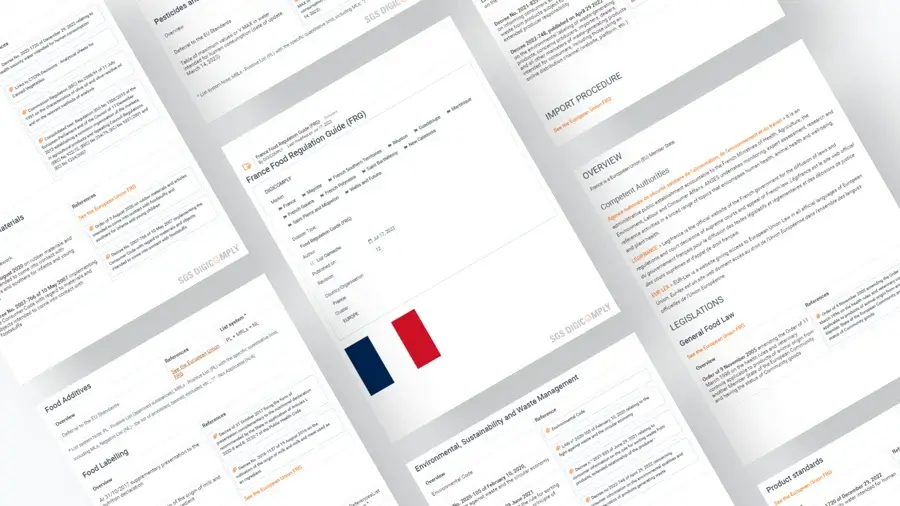What is Agri-Food & Veterinary Authority of Singapore (AVA) – functions now integrated into SFA
The Agri-Food & Veterinary Authority of Singapore (AVA) played a pivotal role in ensuring food safety, animal health, and the overall well-being of the agri-food sector in Singapore. Established to oversee the safety and quality of food, AVA was responsible for a wide range of functions, including food inspection, veterinary services, and the promotion of sustainable practices in agriculture and fisheries. However, in April 2020, the functions of AVA were integrated into the newly formed Singapore Food Agency (SFA). This strategic move was aimed at enhancing the efficiency and effectiveness of food management in Singapore, addressing the challenges posed by a rapidly evolving food landscape.
Objectives of the Integration
The consolidation of AVA's functions into SFA was driven by several key objectives:
- Streamlining Governance: The integration aimed to centralize food safety governance under a single agency, allowing for more coherent policies and streamlined processes.
- Enhancing Food Security: By combining resources and expertise, SFA is better positioned to ensure food security in Singapore, which is heavily reliant on imports.
- Promoting Innovation: SFA focuses on fostering innovation in the agri-food sector to meet the changing demands of consumers and to adapt to global food trends.
- Sustainable Practices: The integration emphasizes sustainable agricultural practices, aligning with global sustainability goals.
Key Functions of SFA Post-Integration
With the integration of AVA's functions, SFA has taken on several critical roles that affect the food industry directly:
- Food Safety Regulation: SFA oversees the safety and quality of food products, implementing stringent regulations and conducting inspections to ensure compliance with safety standards.
- Animal and Plant Health: The agency is responsible for safeguarding animal health and managing plant health, preventing the introduction and spread of pests and diseases that could threaten local agriculture.
- Food Supply Management: SFA plays a crucial role in managing Singapore's food supply chain, addressing vulnerabilities and ensuring an uninterrupted supply of safe food.
- Research and Development: SFA invests in R&D initiatives to drive innovation in food production, including alternative proteins, urban farming, and biotechnology.
- Public Education: The agency actively engages in public outreach campaigns to educate consumers about food safety, sustainable practices, and healthy eating.
Impact on the Food Industry
The integration of AVA into SFA has had profound implications for the food industry in Singapore:
1. Enhanced Food Safety Standards
The centralization of food safety oversight has resulted in more robust and harmonized food safety standards. SFA’s dedicated resources allow for more thorough inspections and quicker response times to potential food safety incidents. This has not only improved consumer confidence but has also fortified Singapore's reputation as a safe food hub.
2. Increased Collaboration and Support
SFA fosters collaboration among stakeholders in the agri-food sector, including farmers, food manufacturers, and researchers. By facilitating partnerships, SFA enables knowledge sharing and resource pooling, which is essential for driving growth and innovation in the food industry.
3. Promotion of Sustainable Practices
With sustainability at the core of its mission, SFA encourages practices that reduce environmental impact. This includes promoting urban farming initiatives, vertical farming technologies, and alternative protein sources. Such initiatives not only contribute to food security but also align with global sustainability goals, addressing the pressing issue of climate change.
4. Innovation and Technology Adoption
SFA has positioned itself as a leader in driving innovation within the food industry. By investing in research and development, SFA supports local startups and established companies in adopting cutting-edge technologies, such as precision agriculture and food processing techniques. This focus on innovation is crucial for enhancing productivity and competitiveness in a global market.
5. Consumer Engagement and Education
Through various outreach programs, SFA actively engages with consumers to raise awareness about food safety and nutrition. Educational initiatives help to inform the public about the importance of food choices, fostering a culture of health and wellness among Singaporeans.
Conclusion
The integration of the Agri-Food & Veterinary Authority of Singapore into the Singapore Food Agency marks a significant transformation in the governance of food safety and agricultural practices in the nation. By consolidating functions and focusing on sustainability and innovation, SFA is well-equipped to navigate the complexities of the modern food landscape. The impact of this integration is expected to resonate throughout the food industry, ultimately enhancing food security, safety, and consumer confidence in Singapore.





